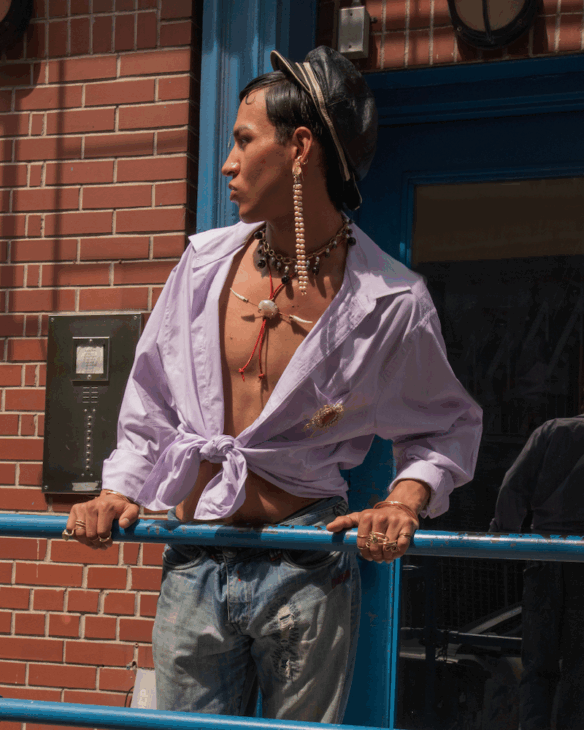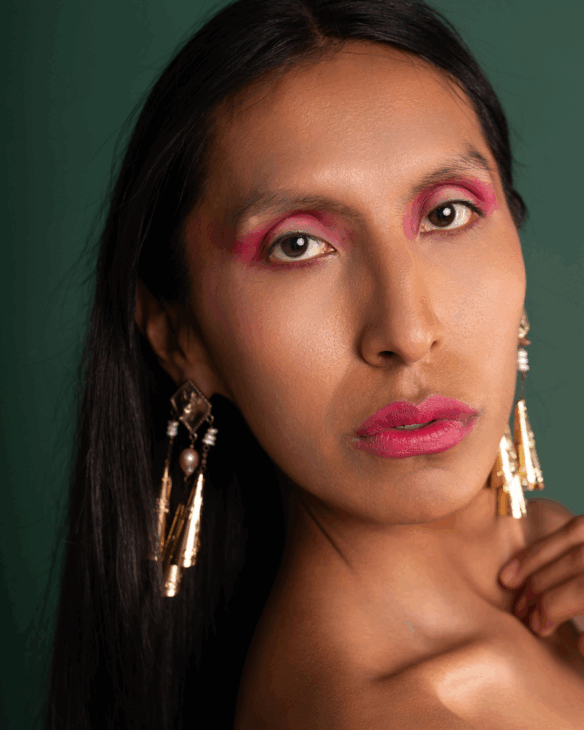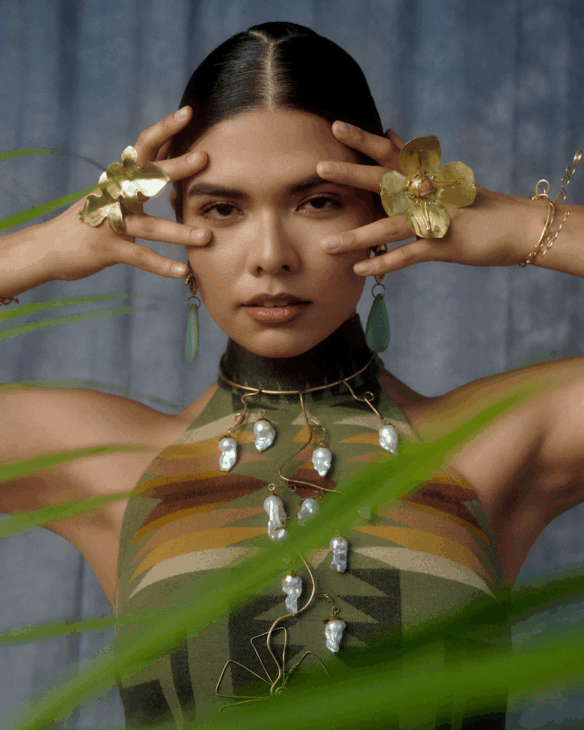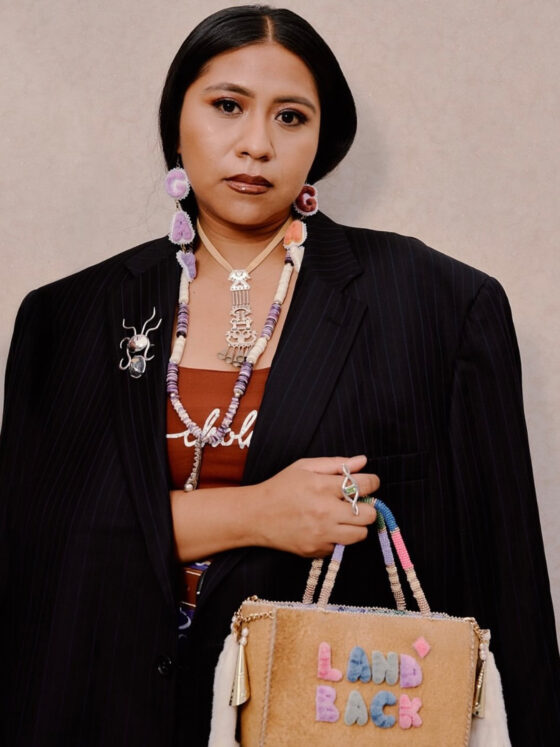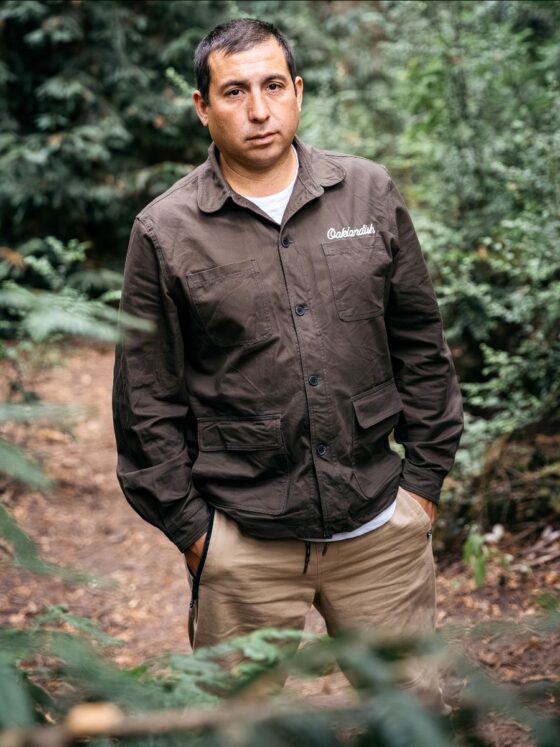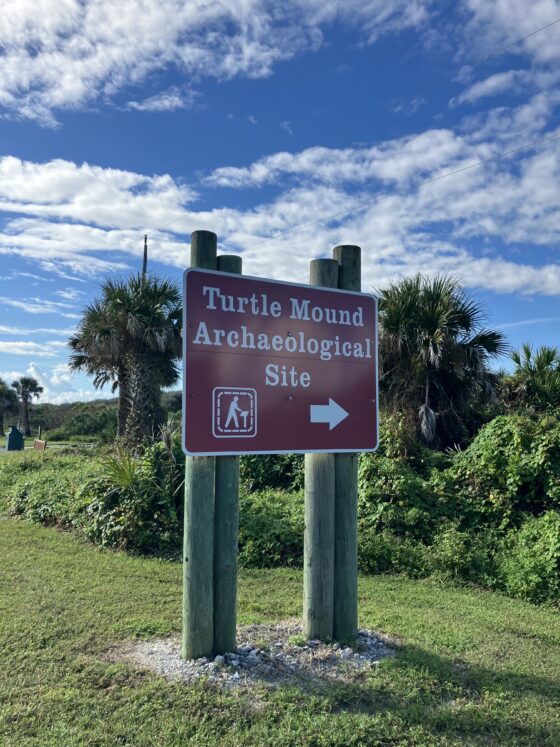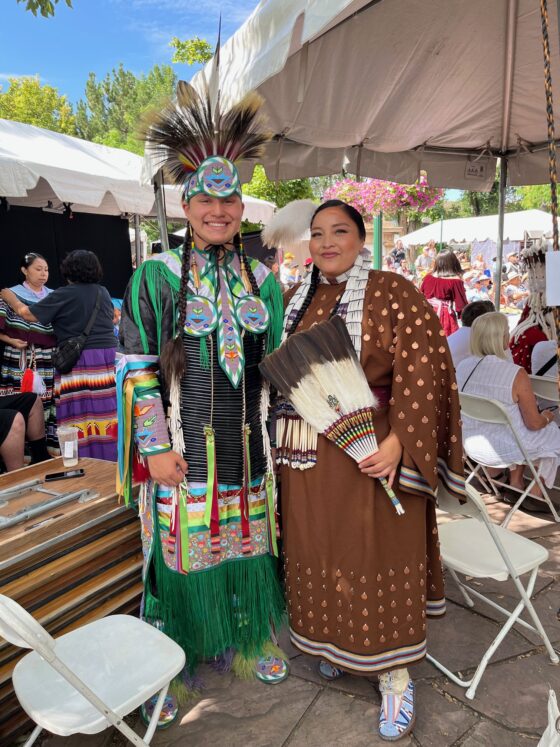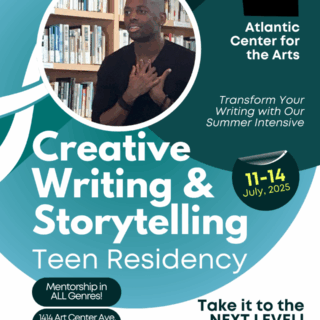Ingredients: The Fry Bread Interview with Omar Monroy of El Techichi

NEW YORK CITY-Omar Monroy (She/They) is an award-winning trans nonbinary Oaxaqueña immigrant artist of Ñuu Savi descent. With El Techichi, their maximalist, gender-free jewelry line, Omar honors their heritage and childhood memories—blending story telling with contemporary materials and a distinct NYC flair.
Their pieces have adorned icons Lily Gladstone and Mali Obomsawin, and have made appearances in Vogue and Fashionista, and at Native Fashion Week Santa Fe and exhibited across Turtle Island. Now based in Lenapehoking (Lower East Side, NYC) with their partner Adam and beloved techichi Rue, Omar was named a 2024 Here We Are Award winner for Rising Entrepreneurs.
Fry Bread spoke with Omar last this month to learn more about the art of El Techichi.
Fry Bread: Can you tell us about what you do and why you do it?
It started out as a hobby. I went to art school, and I learned photography. So I am a jewelry photographer during the day and a jewelry maker at night. When I started working in the jewelry industry, I started to fall in love with jewelry. The more that I got along with it, I started curating and then eventually started to design things for my partner for their birthdays and stuff.
And then eventually I was just kind of, , why don’t I start doing this? And it just kind of came naturally to me as well–because my family mostly works with their hands.
My grandpa was a farmer in Oaxaca and my mom is a cosmetologist. My uncles are mechanics and factory workers, so there is a lot of hand working in my family. My skills are mechanic, so it’s a lot of hand working, and I was, ‘how can I add on to this lineage of hard-working individuals that work with their hands?’ Jewelry just seemed to be a perfect fit
And I’ve been on this journey of reconnecting with my heritage. Me and my brother, we were born in Mexico, and we were brought over to what is known as the United States in 1999, and because of that, and because of the colonization, we had to assimilate. Spanish was only spoken at home. I had to learn how to speak English very quickly because I had to help my mom figure out things school paperwork and permission slips, and sometimes be my own translator at parents-teacher conferences.
With jewelry, I’ve been able to have this connection with my mom, and reactivate certain memories about what it was by growing up for her–Memories of her Grandpa, and la Mixteca [and words she knew growing up] and now I get to use my art to encompass those memories and immortalize them in jewelry.
Jewelry is my pen and paper. Jewelry and wire is the best way that I can write down those memories and those stories and be able to have a concrete way to immortalize our history, the stories of my childhood, my mom’s childhood, not only in Oaxaca, but also in California, and also my my way of being in a way, an activist, because my stuff is very much about being gender-neutral and being free of Colonial borders.
For a long time, I was told that beauty had to be found somewhere else, not only physical Beauty, but spiritual beauty, self-worth had to be found somewhere else.
And then, recently, as I started going through therapy, I started to fall in love with myself a lot. And I realized that we’re told to look elsewhere because of colonization and capitalism: You have to go and consume someone else’s culture in order to find yourself, but forget about your culture, because then that way the less people that are remembering who your people are or where you’re from, the more we’re able to come in, and steal your land because you’re not going to have ties to it.
Fry Bread: What a beautiful way to pass on your stories and your experience in your life through your work. That’s just gorgeous, and that’s your Birthright. It’s our Birthright.
What kind of encouragement do you have for people who might have in their hearts to create jewelry or might have in their hearts to work with some metal or traditional materials. What would you tell them? How would you encourage them?
Just go for it, but it’s easier said than done. Go for it, but also take some time to research what it is that you want to do, because that way you, you’re less wasteful. I feel with metalsmithing and jewelry specifically, there’s a lot of mining that goes on, so there’s a lot of destruction of our climate that goes on. We don’t have a lot of control over it because it’s done somewhere else, but doing your research and learning your stuff comes from and figuring out how to keep it more sustainable. It will help you create something more meaningful, because then you’re not just copying and pasting someone else’s design.
Learn techniques that have been passed down from generation to generation, and ways that you can take that technique and then even evolve it into something new.
Fry Bread: Is there anything that you want to say or that you really want people to understand about you and your work?
My work is meant to be worn by everybody. I think adornment has been ours for so long that every time I see a jewelry brand release a men’s line and a women’s line, it’s a constant reminder of these gender binaries that were forced on us… Why couldn’t you wear something like this? It’s not for a specific type of person. It’s for everybody who wants to feel like they’re on top of the world. You forget that all of this was ours before someone told us it wasn’t allowed to be this way. My jewelry is meant for you to set yourself free from those gender norms. I
I’m so much happier and in love with myself because I just put on what I want to put on, and it makes me feel so much closer to my ancestors, and to myself, and to my mom, and to my family.
Fry Bread: You’re working with empowering materials and you’re infusing those materials with your story and with your history and with yourself. Where can people look for you or your work?
Definitely find me on my Instagram @eltechichijewelry. We’re in New York City at Relative Arts NYC. That’s where you’ll find most of my one-of-a-kind work.
Learn more at https://eltechichijewelry.com/
